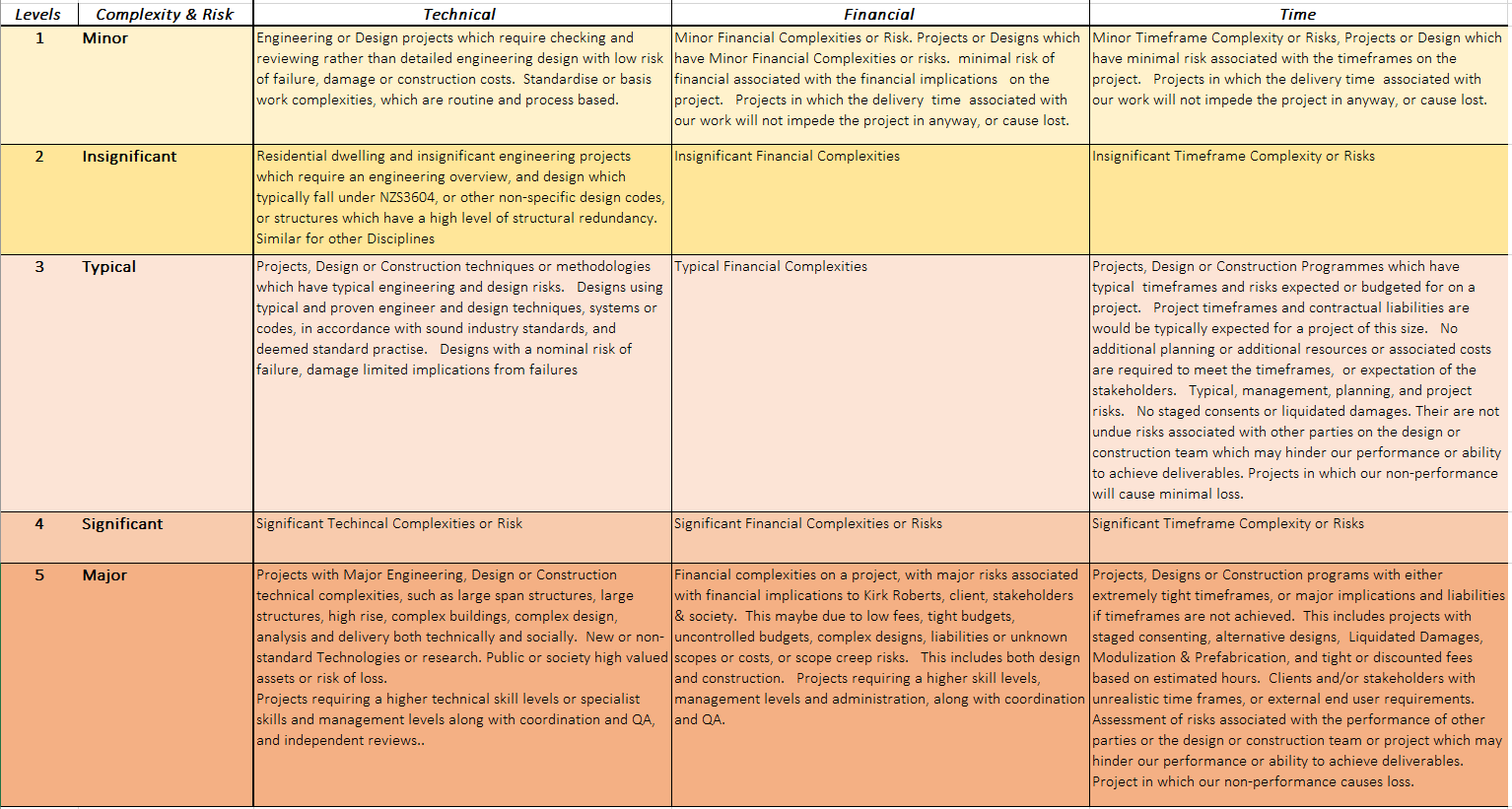Technical Risk and Complexity
The Technical Risk and Complexity assesses the Technical, Financial and Timeframe risks associated with the project. This takes account of the risk exposure, Kirk Roberts, clients, stakeholders and society has on project, thus allowing us to assess the competency, capability, verification and quality assurance required to deliver a project.
| Technical Complexity and Risk | Financial Complexity & Risk | Time Complexity & Risk | |
| Brief | Technical Complexity tests the complexity of the work and risk of failure, design principals or standards used, scale of work or risk of loss, plus level of technical competency required. Assessment of the risk or implications to Kirk Roberts, Clients, Stakeholders or society or the assets due the implications from failures or under-performance. | Financial Complexity & Risk tests the financial risk of the project and components, based on the financial implications to Kirk Roberts, clients, stakeholders and or public/society. | Time complexity & Risk tests the risks of the project against the project and design timeframes. Assessment of the implications if timeframes aren't meet for Kirk Roberts, clients, stakeholders or the public/society. |
| General Description |
Design, Engineering and Management, technical risks cover the technical and intricate detail and complexities in the project. Technical complexities are comprised of the technical competency required to carry out works, and the level of QA, and independent verification to ensure correct decision making, competency and quality of product workmanship or deliverables are achieved. Technical competency relates to your core discipline or technical training. Thus complex work (Level 5) requires high level of experienced and or competency and required a high level of verification and Quality assurance. | This Assesses the Financial complexities of the project, for example the risk of financial implications to the client and/or ourselves. This maybe due to low fees, tight budgets, uncontrolled budgets, complex designs, liabilities or unknown scopes or costs This includes both design and construction. Assessment of the financial implications and risks. Thus as and example larger scale projects have a higher risk as they require higher skill levels, management levels and administration, along with coordination and QA, however this isn't limited to large projects. | This Assesses the timeframe and delivery complexities of the project, for example the risk of financial or time implications to the client and/or ourselves, due to missed timeframes. . This maybe due to low fees, tight timeframes, staged contracts, uncontrolled budgets, complex designs, liabilities or unknown scopes or costs, but also in relation to other consultants, contractors and third parties which may effect our ability to perform. Thus as and example a project with unrealistic timeframes, were our performance is based on the delivery of other parties work. This will require higher skill levels, management levels and administration, along with coordination and QA. |
To assess the Technical Risk - you select the value from the available options where you expect the project to fall. This then assigns a Risk Value, and together with the Commercial Risk and Complexity is used to calculate an overall Complexity & Risk.
The image below shows the risk values based on the selected Component being assessed:
